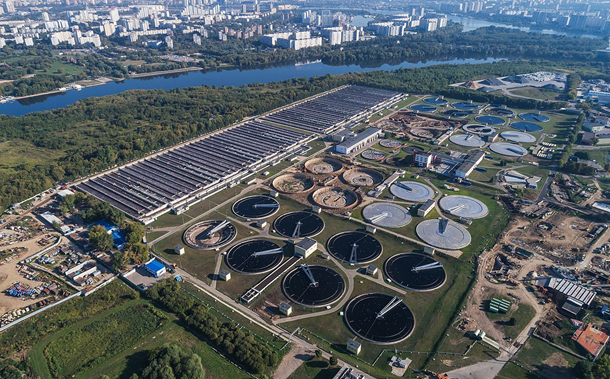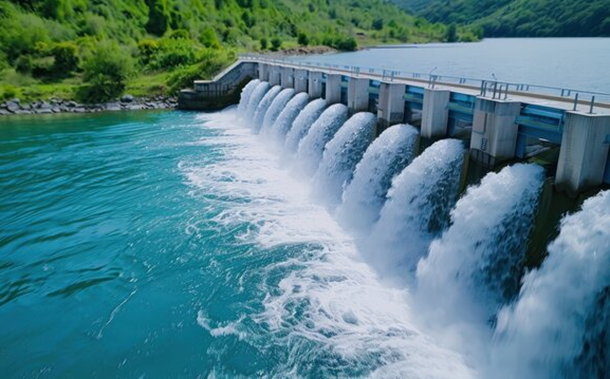Utilizing Remote Sensing and GIS Techniques for Flood Hazard Mapping and Risk Assessment
Downloads
Doi:10.28991/CEJ-2024-010-05-05
Full Text:PDF
Downloads
[2] Douben, K.-J. (2006). Characteristics of river floods and flooding: a global overview, 1985–2003. Irrigation and Drainage, 55(S1), S9–S21. doi:10.1002/ird.239.
[3] Waylen, P., & Woo, M. -K. (1982). Prediction of annual floods generated by mixed processes. Water Resources Research, 18(4), 1283–1286. doi:10.1029/WR018i004p01283.
[4] Acreman, M. C. (1985). Predicting the mean annual flood from basin characteristics in Scotland. Hydrological Sciences Journal, 30(1), 37–49. doi:10.1080/02626668509490970.
[5] Horritt, M. S., & Bates, P. D. (2002). Evaluation of 1D and 2D numerical models for predicting river flood inundation. Journal of Hydrology, 268(1–4), 87–99. doi:10.1016/S0022-1694(02)00121-X.
[6] Emerton, R. E., Stephens, E. M., Pappenberger, F., Pagano, T. C., Weerts, A. H., Wood, A. W., Salamon, P., Brown, J. D., Hjerdt, N., Donnelly, C., Baugh, C. A., & Cloke, H. L. (2016). Continental and global scale flood forecasting systems. Wiley Interdisciplinary Reviews: Water, 3(3), 391–418. doi:10.1002/wat2.1137.
[7] Posthumus, H., Hewett, C. J. M., Morris, J., & Quinn, P. F. (2008). Agricultural land use and flood risk management: Engaging with stakeholders in North Yorkshire. Agricultural Water Management, 95(7), 787–798. doi:10.1016/j.agwat.2008.02.001.
[8] Banerjee, L. (2010). Effects of flood on agricultural productivity in Bangladesh. Oxford Development Studies, 38(3), 339–356. doi:10.1080/13600818.2010.505681.
[9] Thomaz, S. M., Bini, L. M., & Bozelli, R. L. (2007). Floods increase similarity among aquatic habitats in river-floodplain systems. Hydrobiologia, 579(1), 1–13. doi:10.1007/s10750-006-0285-y.
[10] Le, T. V. H., Nguyen, H. N., Wolanski, E., Tran, T. C., & Haruyama, S. (2007). The combined impact on the flooding in Vietnam's Mekong River delta of local man-made structures, sea level rise, and dams upstream in the river catchment. Estuarine, Coastal and Shelf Science, 71(1–2), 110–116. doi:10.1016/j.ecss.2006.08.021.
[11] Du, W., Fitzgerald, G. J., Clark, M., & Hou, X. Y. (2010). Health impacts of floods. Prehospital and Disaster Medicine, 25(3), 265–272. doi:10.1017/S1049023X00008141.
[12] Rojas, R., Feyen, L., & Watkiss, P. (2013). Climate change and river floods in the European Union: Socio-economic consequences and the costs and benefits of adaptation. Global Environmental Change, 23(6), 1737–1751. doi:10.1016/j.gloenvcha.2013.08.006.
[13] Kundzewicz, Z. W., Lugeri, N., Dankers, R., Hirabayashi, Y., Döll, P., Pińskwar, I., Dysarz, T., Hochrainer, S., & Matczak, P. (2010). Assessing river flood risk and adaptation in Europe-review of projections for the future. Mitigation and Adaptation Strategies for Global Change, 15(7), 641–656. doi:10.1007/s11027-010-9213-6.
[14] Laudan, J., Rözer, V., Sieg, T., Vogel, K., & Thieken, A. H. (2017). Damage assessment in Braunsbach 2016: Data collection and analysis for an improved understanding of damaging processes during flash floods. Natural Hazards and Earth System Sciences, 17(12), 2163–2179. doi:10.5194/nhess-17-2163-2017.
[15] Mahmood, S., Khan, A. ul H., & Ullah, S. (2016). Assessment of 2010 flash flood causes and associated damages in Dir Valley, Khyber Pakhtunkhwa Pakistan. International Journal of Disaster Risk Reduction, 16, 215–223. doi:10.1016/j.ijdrr.2016.02.009.
[16] Istrati, D., & Hasanpour, A. (2022). Advanced numerical modelling of large debris impact on piers during extreme flood events. 7th IAHR Europe Congress, Athens, Greece.
[17] Borga, M., Stoffel, M., Marchi, L., Marra, F., & Jakob, M. (2014). Hydrogeomorphic response to extreme rainfall in headwater systems: Flash floods and debris flows. Journal of Hydrology, 518, 194–205. doi:10.1016/j.jhydrol.2014.05.022.
[18] Buslima, F. S., Omar, R. C., Jamaluddin, T. A., & Taha, H. (2018). Flood and flash flood geo-hazards in Malaysia. International Journal of Engineering and Technology (UAE), 7(4), 760–764. doi:10.14419/ijet.v7i4.35.23103.
[19] Ozturk, U., Wendi, D., Crisologo, I., Riemer, A., Agarwal, A., Vogel, K., López-Tarazón, J. A., & Korup, O. (2018). Rare flash floods and debris flows in southern Germany. Science of the Total Environment, 626, 941–952. doi:10.1016/j.scitotenv.2018.01.172.
[20] Hou, J., Li, B., Tong, Y., Ma, L., Ball, J., Luo, H., Liang, Q., & Xia, J. (2020). Cause analysis for a new type of devastating flash flood. Hydrology Research, 51(1), 1–16. doi:10.2166/nh.2019.091.
[21] Shatnawi, N. (2024). Mapping Floods during Cloudy Weather Using Radar Satellite Images. Jordan Journal of Civil Engineering, 18(1), 32–41. doi:10.14525/JJCE.v18i1.03.
[22] Kreibich, H., Piroth, K., Seifert, I., Maiwald, H., Kunert, U., Schwarz, J., Merz, B., & Thieken, A. H. (2009). Is flow velocity a significant parameter in flood damage modelling? Natural Hazards and Earth System Science, 9(5), 1679–1692. doi:10.5194/nhess-9-1679-2009.
[23] Kron, W. (2005). Flood Risk= Hazard.Values.Vulnerability. Water international, 30(1), 58-68. doi:10.1080/02508060508691837.
[24] Wang, Y., Li, Z., Tang, Z., & Zeng, G. (2011). A GIS-Based Spatial Multi-Criteria Approach for Flood Risk Assessment in the Dongting Lake Region, Hunan, Central China. Water Resources Management, 25(13), 3465–3484. doi:10.1007/s11269-011-9866-2.
[25] Dewan, A. M. (2013). Floods in a megacity: Geospatial techniques in assessing hazards, risk and vulnerability. Floods in a Megacity: Geospatial Techniques in Assessing Hazards, Risk and Vulnerability, Springer, Dordrecht, Netherlands. doi:10.1007/978-94-007-5875-9.
[26] Corsini, A., Cervi, F., & Ronchetti, F. (2009). Weight of evidence and artificial neural networks for potential groundwater spring mapping: an application to the Mt. Modino area (Northern Apennines, Italy). Geomorphology, 111(1–2), 79–87. doi:10.1016/j.geomorph.2008.03.015.
[27] Siddayao, G. P., Valdez, S. E., & Fernandez, P. L. (2014). Analytic Hierarchy Process (AHP) in Spatial Modeling for Floodplain Risk Assessment. International Journal of Machine Learning and Computing, 4(5), 450–457. doi:10.7763/ijmlc.2014.v4.453.
[28] Dano, U. L., Balogun, A. L., Matori, A. N., Yusouf, K. W., Abubakar, I. R., Mohamed, M. A. S., Aina, Y. A., & Pradhan, B. (2019). Flood susceptibility mapping using GIS-based analytic network process: A case study of Perlis, Malaysia. Water, 11(3), 615. doi:10.3390/w11030615.
[29] Waseem, M., Ahmad, S., Ahmad, I., Wahab, H., & Leta, M. K. (2023). Urban flood risk assessment using AHP and geospatial techniques in swat Pakistan. SN Applied Sciences, 5(8), 215. doi:10.1007/s42452-023-05445-1.
[30] Antzoulatos, G., Kouloglou, I. O., Bakratsas, M., Moumtzidou, A., Gialampoukidis, I., Karakostas, A., Lombardo, F., Fiorin, R., Norbiato, D., Ferri, M., Symeonidis, A., Vrochidis, S., & Kompatsiaris, I. (2022). Flood Hazard and Risk Mapping by Applying an Explainable Machine Learning Framework Using Satellite Imagery and GIS Data. Sustainability (Switzerland), 14(6), 3251. doi:10.3390/su14063251.
[31] Psomiadis, E., Diakakis, M., & Soulis, K. X. (2020). Combining SAR and optical earth observation with hydraulic simulation for flood mapping and impact assessment. Remote Sensing, 12(23), 1–29. doi:10.3390/rs12233980.
[32] Kettner, A. J., Schumann, G. J. P., & Brakenridge, G. R. (2020). Applying Remote Sensing to Support Flood Risk Assessment and Relief Agencies: A Global to Local Approach. International Geoscience and Remote Sensing Symposium (IGARSS), 3239–3242. doi:10.1109/IGARSS39084.2020.9323351.
[33] Alarifi, S. S., Abdelkareem, M., Abdalla, F., & Alotaibi, M. (2022). Flash Flood Hazard Mapping Using Remote Sensing and GIS Techniques in Southwestern Saudi Arabia. Sustainability, 14(21), 14145. doi:10.3390/su142114145.
[34] M Amen, A. R., Mustafa, A., Kareem, D. A., Hameed, H. M., Mirza, A. A., SzydŠ‚owski, M., & Bala, B. K. (2023). Mapping of Flood-Prone Areas Utilizing GIS Techniques and Remote Sensing: A Case Study of Duhok, Kurdistan Region of Iraq. Remote Sensing, 15(4), 1102. doi:10.3390/rs15041102.
[35] Madi, H., Bedjaoui, A., Elhoussaoui, A., Elbakai, L. O., & Bounaama, A. (2023). Flood Vulnerability Mapping and Risk Assessment Using Hydraulic Modeling and GIS in Tamanrasset Valley Watershed, Algeria. Journal of Ecological Engineering, 24(7), 35–48. doi:10.12911/22998993/163252.
[36] Kumar, N., & Jha, R. (2023). GIS-based Flood Risk Mapping: The Case Study of Kosi River Basin, Bihar, India. Engineering, Technology and Applied Science Research, 13(1), 9830–9836. doi:10.48084/etasr.5377.
[37] Chakrabortty, R., Pal, S. C., Ruidas, D., Roy, P., Saha, A., & Chowdhuri, I. (2023). Living with Floods Using State-of-the-Art and Geospatial Techniques: Flood Mitigation Alternatives, Management Measures, and Policy Recommendations. Water, 15(3), 558. doi:10.3390/w15030558.
[38] Chan, S. W., Abid, S. K., Sulaiman, N., Nazir, U., & Azam, K. (2022). A systematic review of the flood vulnerability using geographic information system. Heliyon, 8(3), 9075. doi:10.1016/j.heliyon.2022.e09075.
[39] Efraimidou, E., & Spiliotis, M. (2024). A GIS-Based Flood Risk Assessment Using the Decision-Making Trial and Evaluation Laboratory Approach at a Regional Scale. Environmental Processes, 11(1), 9. doi:10.1007/s40710-024-00683-w.
[40] Department of Statistics (DOS). (2019). Estimated Population of the Kingdom by Urban and Rural, at End-year 2010. Jordan Statistical Yearbook, Department of Statistics (DOS), Amman, Jordan.
[41] Makhamreh, Z. (2018). Derivation of vegetation density and land-use type pattern in mountain regions of Jordan using multi-seasonal SPOT images. Environmental Earth Sciences, 77(10), 384. doi:10.1007/s12665-018-7534-z.
[42] JMD. (2018). Jordan Meteorological Department (JMD). Amman, Jordan. Available online: http://jmd.gov.jo (accessed on April 2024).
[43] Al-husban, Y. (2019). Urban expansion and shrinkage of vegetation cover in Al-Balqa Governorate, the Hashemite Kingdom of Jordan. Environmental Earth Sciences, 78(21), 620. doi:10.1007/s12665-019-8635-z.
[44] Al-Bilbisi, H. H. (2012). A Two-Decade Land Use and Cover Change Detection and Land Degradation Monitoring in Central Jordan Using Satellite Images. Jordan Journal of Social Sciences, 5(1), 128–142.
[45] Qtiashat, D., Makhmreh, Z., Taleb, H. A., & Khlaifat, A. (2018). Urban Land Use Pattern and Road Network Characteristics Using GIS in Al Salt City, Jordan. Modern Applied Science, 12(4), 128. doi:10.5539/mas.v12n4p128.
[46] Withanage, N. S., Dayawansa, N. D. K., & De Silva, R. P. (2015). Morphometric analysis of the Gal Oya River basin using spatial data derived from GIS. Tropical Agricultural Research, 26(1), 175. doi:10.4038/tar.v26i1.8082.
[47] Rudraiah, M., Govindaiah, S., & Vittala, S. S. (2008). Morphometry using remote sensing and GIS techniques in the sub-basins of Kagna river basin, Gulburga district, Karnataka, India. Journal of the Indian Society of Remote Sensing, 36(4), 351–360. doi:10.1007/s12524-008-0035-x.
[48] Vojtek, M., Vojteková, J., Costache, R., Pham, Q. B., Lee, S., Arshad, A., Sahoo, S., Linh, N. T. T., & Anh, D. T. (2021). Comparison of multi-criteria-analytical hierarchy process and machine learning-boosted tree models for regional flood susceptibility mapping: a case study from Slovakia. Geomatics, Natural Hazards and Risk, 12(1), 1153–1180. doi:10.1080/19475705.2021.1912835.
[49] Costache, R., Arabameri, A., Elkhrachy, I., Ghorbanzadeh, O., & Pham, Q. B. (2021). Detection of areas prone to flood risk using state-of-the-art machine learning models. Geomatics, Natural Hazards and Risk, 12(1), 1488–1507. doi:10.1080/19475705.2021.1920480.
[50] Ulloa-Torrealba, Y., Stahlmann, R., Wegmann, M., & Koellner, T. (2020). Over 150 Years of Change: Object-Oriented Analysis of Historical Land Cover in the Main River Catchment, Bavaria/Germany. Remote Sensing, 12(24), 4048. doi:10.3390/rs12244048.
[51] Magesh, N. S., Jitheshlal, K. V., Chandrasekar, N., & Jini, K. V. (2013). Geographical information system-based morphometric analysis of Bharathapuzha river basin, Kerala, India. Applied Water Science, 3(2), 467–477. doi:10.1007/s13201-013-0095-0.
[52] Strahler, A. N. (1964). Quantitative geomorphology of drainage basin and channel networks. Handbook of applied hydrology, McGraw-Hill Education, New York, United states.
[53] Horton, R. E. (1945). Erosional Development of Streams and Their Drainage Basins; Hydrophysical Approach to Quantitative Morphology. Geological Society of America Bulletin, 56(3), 275. doi:10.1130/0016-7606(1945)56[275:edosat]2.0.co;2.
[54] Schumm, S. A. (1956). Evolution of drainage systems and slopes in badlands at Perth Amboy, New Jersey. Bulletin of the Geological Society of America, 67(5), 597–646. doi:10.1130/0016-7606(1956)67[597:EODSAS]2.0.CO;2.
[55] Shiva Shankar, V., Purti, N., Mandal, K. K., Satyakeerthy, T., & Jacob, S. (2022). A Geospatial Approach to Demarcate Flood Susceptible Zones of Rangat Watershed, Middle Andaman, India. Journal of Scientific Research, 66(03), 49–56. doi:10.37398/jsr.2022.660307.
[56] Obi Reddy, G. P., Maji, A. K., & Gajbhiye, K. S. (2004). Drainage morphometry and its influence on landform characteristics in a basaltic terrain, Central India - A remote sensing and GIS approach. International Journal of Applied Earth Observation and Geoinformation, 6(1), 1–16. doi:10.1016/j.jag.2004.06.003.
[57] Saaty, T. L. (1980). The analytic hierarchy process: planning, priority setting, resource allocation. McGraw-Hill, New York, United states.
[58] Al-Taani, A., Al-husban, Y., & Ayan, A. (2023). Assessment of potential flash flood hazards. Concerning land use/land cover in Aqaba Governorate, Jordan, using a multi-criteria technique. Egyptian Journal of Remote Sensing and Space Science, 26(1), 17–24. doi:10.1016/j.ejrs.2022.12.007.
[59] Feng, B., Zhang, Y., & Bourke, R. (2021). Urbanization impacts on flood risks based on urban growth data and coupled flood models. Natural Hazards, 106(1), 613–627. doi:10.1007/s11069-020-04480-0.
[60] AlMahasneh, L., Abuhamoor, D., Al Sane, K., & Haddad, N. J. (2023). Assessment and mapping of flash flood hazard severity in Jordan. International Journal of River Basin Management, 21(2), 311–325. doi:10.1080/15715124.2021.1981354.
- Authors retain all copyrights. It is noticeable that authors will not be forced to sign any copyright transfer agreements.
- This work (including HTML and PDF Files) is licensed under a Creative Commons Attribution 4.0 International License.![]()














